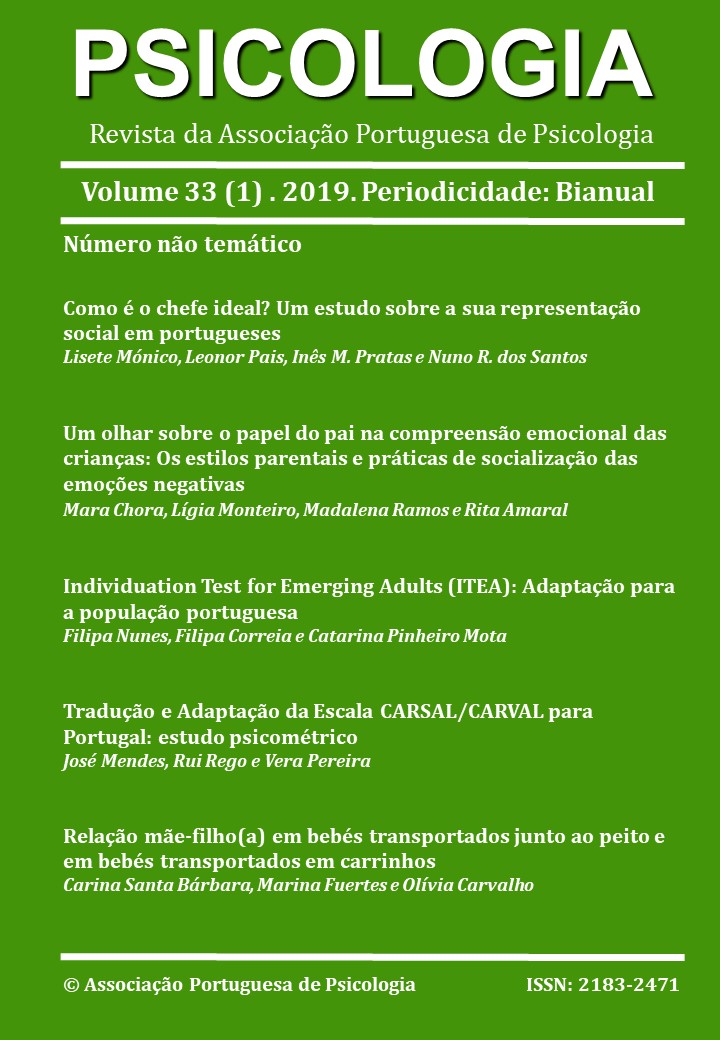Tradução e Adaptação da Escala CARSAL/CARVAL para Portugal: Estudo psicométrico
DOI:
https://doi.org/10.17575/rpsicol.v33i1.1425Palavras-chave:
Auto-esquema, Saliência, Valência, Análise FatorialResumo
O presente estudo tem como objetivo a tradução, adaptação e análise das propriedades psicométricas do instrumento CARSAL/CARVAL. A amostra foi constituída por 202 adultos, com idades entre os 18 e os 68 anos, oriundos de várias regiões de Portugal Continental e Ilhas. Avaliaram-se neste estudo, questões sociodemográficas; dois aspetos do auto-esquema da aparência; o investimento esquemático, a autoconsciência da aparência; e os afetos positivos e afetos negativos. A análise fatorial exploratória permitiu a identificação da estrutura fatorial subjacente, confirmando os itens de cada dimensão. Os resultados sugerem índices de consistência interna adequados em ambas as dimensões, verificando-se a homogeneidade das variáveis. A análise fatorial confirmatória apresentou bom ajustamento, apontando para um modelo ajustado a dois fatores, composto por 13 itens. A CARSAL/CARVAL, apresenta-se como um instrumento psicometricamente robusto, na avaliação dos dois aspetos do auto-esquema da aparência (saliência/valência).


